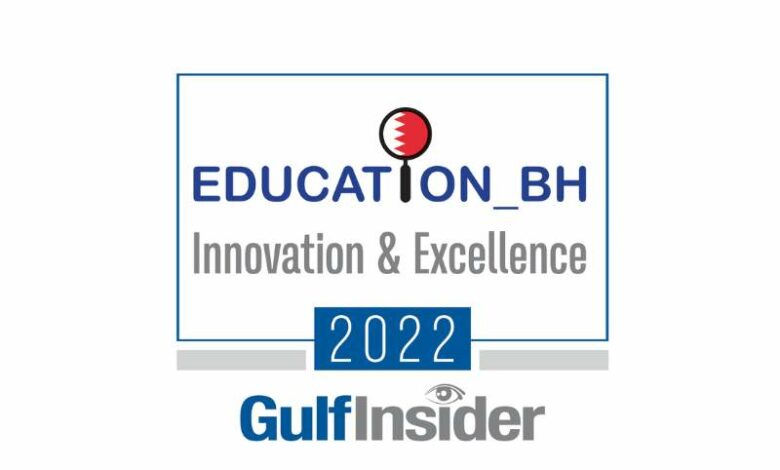Values and Practices towards Innovation & Sustainability: Gulf University
Education_bh Innovation and Excellence

Celebrating educational innovation and excellence across institutions in Bahrain. Read all about the incredible innovations enacted by them only on Gulf Insider’s platform – Education_bh.
Please share a brief background of your innovation.
Gulf University has integrated sustainability into its cultural, educational, and physical environments. A smart and sustainable educational environment has the potential to grow, evolve, adapt, and learn from itself and re-inventing itself by strengthening the synergy between education, research, and community engagement. Within the context of redesigning the campus towards a vibrant campus life, sustainability, and approach to project-based learning, research was conducted by faculty to examine the impact of the educational environment on students’ learning activities and preferences. The theme of the research had been revisited in a summer 2016 workshop on ‘Educational Effectiveness & Enabling Sustainable Architecture’ in collaboration with a design office in the Netherlands. As a legacy of the discussion on the 21st-century university campus, students of the Interior Design Engineering program had been assigned a project to reutilize an unused space (prefabricated cabinet within the university campus). The students conducted further research on the topic of designing educational environments and developed their project in collaboration with the faculty. This is how the idea of ‘Studio Café’, an innovative learning space was generated.

How was it planned?
The students of interior design studio 4 collaborated to work on the project throughout one semester in designing and implementing the concept. Studio Café is a unique learning space in which the concept of a design studio and cafeteria merge. The project highlighted the design tasks to redesign unused spaces and produce furniture elements and units to support individual and group learning. This innovation was planned to ensure a stimulating learning environment and active campus life. The designed space and furniture facilitated the students’ formal and informal learning experiences where they could enjoy the variety of seating, working, and presentation arrangements. In the following semester, the students of interior design studio 3 started to use the Studio Café from the first week and they completed the design of the space by selecting fabrics and colors according to their preferences. The project has been extended to a greenhouse attached to the café. This provides positive vibes with plants, and daylight access in a natural environment, and supports students in taking care of plants and nature.

Did you face any challenges in implementation?
The initial challenge was to convince and motivate students to work by themselves for the first time in executing design ideas and staying long hours on campus to complete tasks. The students were not exposed to working with tools/devices, accepting ideas from each other, and implementing the design ideas. Another challenge was related to construction while working with different materials including steel, wood, and glass. Procuring materials and managing the construction process was not very smooth in the beginning but it was overcome gradually.

A brief assessment of your results
The students of other programs started using the space and enjoyed the ambiance while relaxing, eating, and working on their projects and assignments. This innovative project changed the attributes of the students in terms of collaboration, creativity, team building, and problem-solving. The students enjoyed the hands-on experience while designing, creating layouts 1:1, selecting materials, cutting the wood, fixing, upholstering, etc.
Apart from the designer’s perspective and eating options, the space stimulates the natural environment and motivates students to stay more on campus. The space has created group corners with students of different disciplines working on their projects using laptops, brainstorming ideas, discussing issues relevant to their course topics, preparing presentations, and so on. Interior design engineering students are working on sketches and drawings, explore design ideas, and analyze cases in different corners with a variety of seating arrangements. The corner with a gaming facility provides an opportunity to entertain and enjoy the break with friends. The space has been utilized not for hanging out only but it created more belongingness amongst the students towards the university and campus. Studio Café brought the vibrant campus life experience to students.
In hindsight, what were the most valuable lessons learned? Could things have been done differently?
The students who participated in this innovation gained and shared knowledge and new ideas in the field of interior design, particularly designing their own learning environment reflecting on research methods and results. This project enhanced the collaboration and social relationships between the students during the project phases. After completion of the project, they were able to utilize the Studio Café for both formal and informal learning activities as well as socializing and entertaining. The students became more connected with the instructor. They developed interpersonal competencies like commitment, time management, self-confidence, taking responsibility, and initiative. Moreover, it supported them in choosing their career path while executing different phases of the project. This innovation also underpins the principle of continuous development since Studio Café has been modified and extended ever since its inception.
Sustainability as a dynamic concept evolves over time. In this context, smart sustainable education shapes the current and future environment of the campus enabling students to evolve and obtain 21st-century skills. Undoubtedly, Studio Café is considered to be one of the remarkable initiatives of Gulf University to reflect its values and practices toward innovation and sustainability. However, this opportunity could have been extended to students of other disciplines to contribute to the project. Once students are actively involved in campus development or redesigning spaces it brings ownership and social enterprise and motivates students to perform better in a dynamic and active learning environment.



